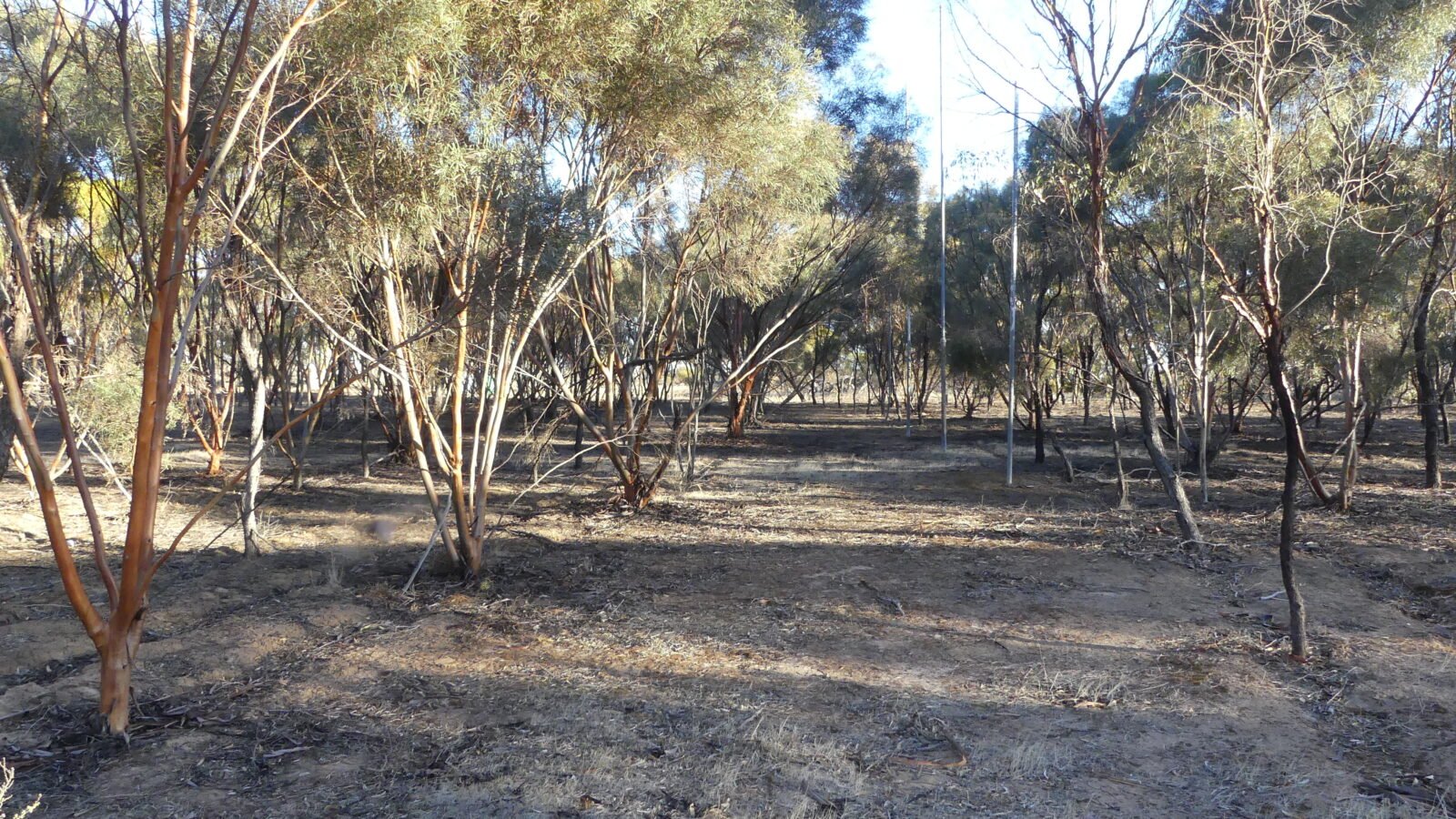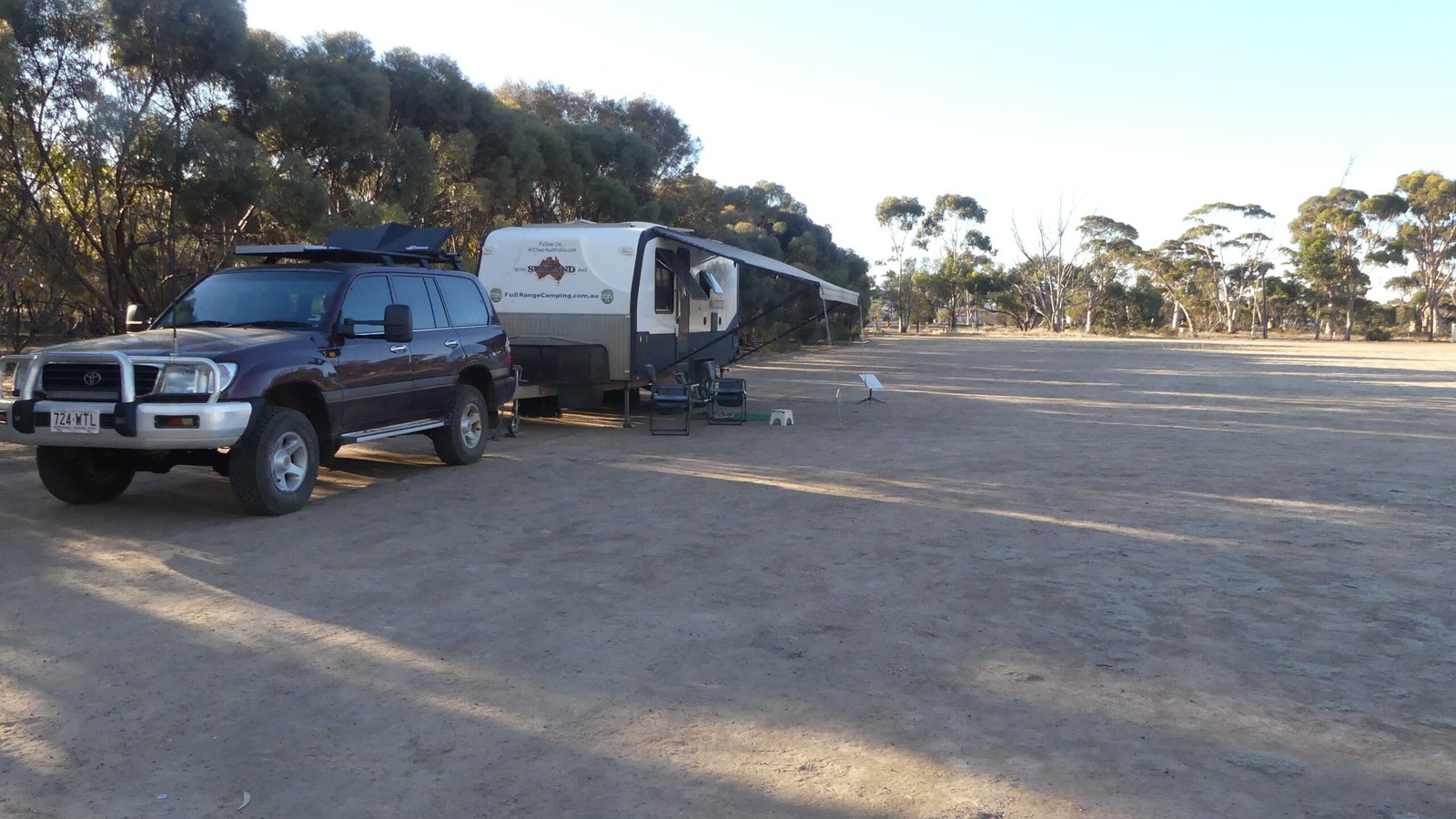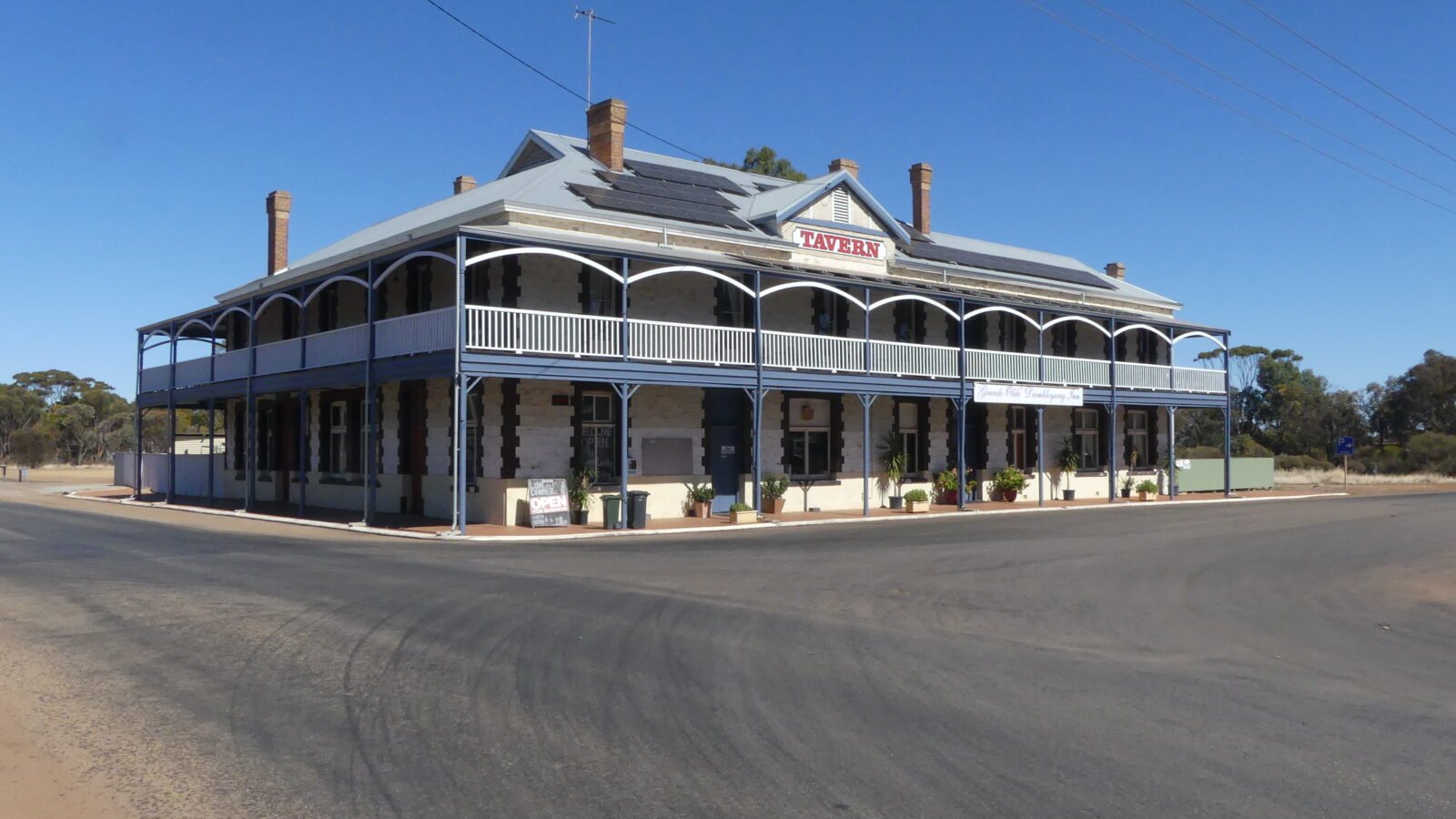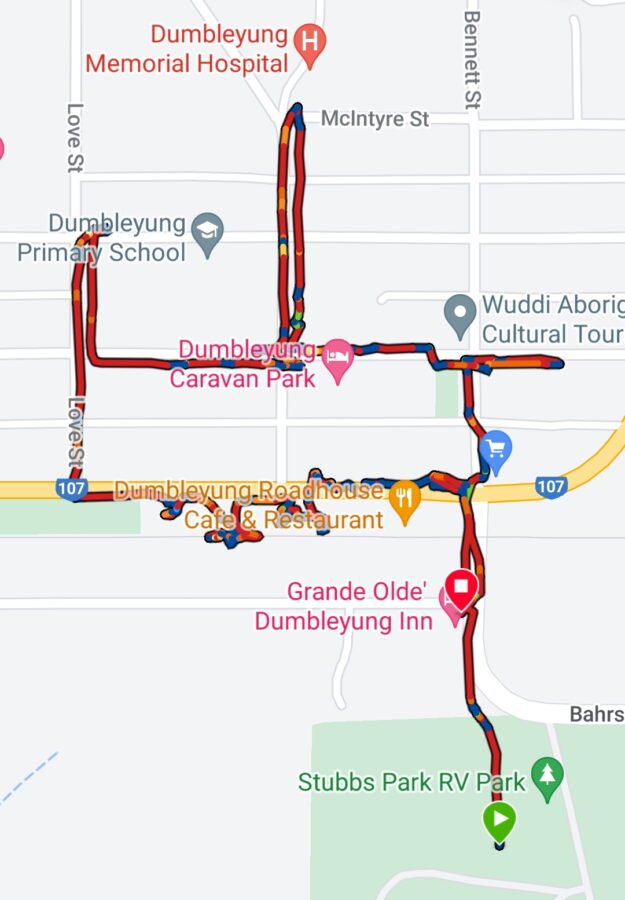April 20-23, 2024
Dumbleyung, our next stop is described by Wikipedia as:
Dumbleyung’s name is of Noongar origin, coming from “Dambeling” which possibly means “large lake or inland sea” (although another source suggests it came from “dumbung”, a game played with bent sticks and a hard piece of fruit. The lake nearby was discovered and named Dambeling Lake by explorers Henry Landor and Henry Maxwell Lefroy in 1843, and the current spelling was used by surveyors in the 1860s and 1870s.
Pastoralists and sandalwood cutters moved into the area, initially settling at Nippering, north of Lake Dumbleyung and 10 kilometres (6 mi) west of the present town.
The first three families to settle in the area were the Cronin, Kersley and Bartram families. George Kersley, Sr. and his future son-in-law Henry Bartram were from pioneer families of the Beverley district and they used to take their sheep flocks from Beverley to Lake Dumbleyung for grazing. In 1875 Kersley received the first grazing leases and the Cronin family from Cork Ireland settled at “Bunkin” in 1878. Bartram settled his young family at “Wheatfield” on the edge of the Lake in 1886. However, in 1907, Dumbleyung was gazetted as a townsite and became the terminus of a railway from Wagin.
Tenders were called for the construction of an Agricultural Hall in 1909 and it was completed by 1910. The National Bank temporarily opened its town branch in the hall.
The Hotel (Grand Olde Dumbleyung Inn) was opened in 1911.
By 1915, Dumbleyung had grown to become the major rural service town in the region.
The RV Stop here is located in the sporting complex and is surrounded on three sides by bush, we took a short stroll around the area:















Like many of these Wheatbelt towns there is a Historic Walking Trail which we took a morning stroll around; a highlight is the Railway Station which has a coded entry provided by an automated phone call and has hours of reading material on the whole district history. As we were staying at the RV Free Camp we started halfway through the circuit at Number 19 of 29. The whole pdf guide can be found here
Many of the locations are just signs with historical information, very few of the original buildings remain.








































